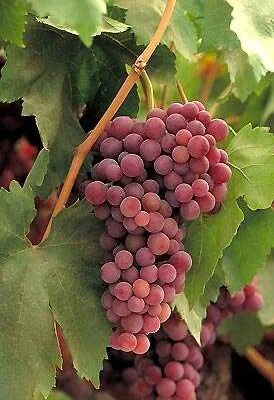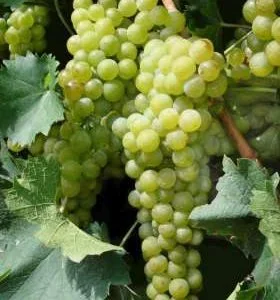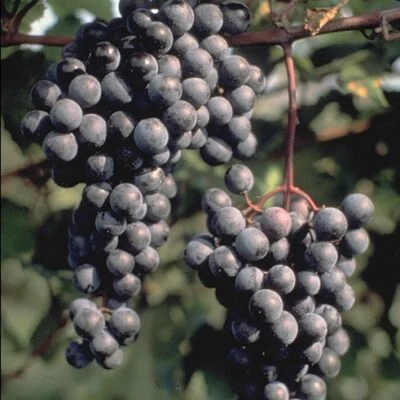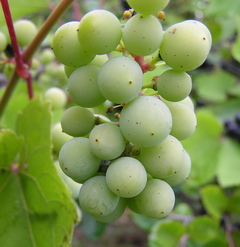Your basket is currently empty!
Probably the most common issue with growing Grape Vines is that of mildew; it can be especially prevalent during wet seasons, or on vines grown in the close confines of a greenhouse, or against a wall. Under such conditions the air circulation is poorer creating ideal conditions for mildew. It can affect both the new leaf growths, and the fruits themselves, rendering them largely useless so it pays to be prepared. Happily forewarned is forearmed, and it’s fairly easy to eliminate, or at least limit the effects, of mildew on your Grape vines.
Good Mildew Resistant Grape Varieties
Buy our quality Grape Vines!
By far the most important factor is that of cultivar. Some varieties are quite prone to mildew, some less so, and others seem impervious. By selecting varieties from the latter group you should be sure of a good clean crop, and good clean growth too. Under particularly soggy conditions, or stress even these might get a little mildew, but seldom enough to cause real problems. The following list are varieties that we recommend:
PHOENIX Grape Vines
A good white/grape variety fro Germany that suits outdoor growing. Dessert of wine.
REGENT Grape Vines
Oval reddish fruits and good autumn leaf colour; a hardy variety for outdoors or in. Dual purpose.
BOSKOOP GLORY Grape Vines
This is a favourite variety that does well in the garden or the cold greenhouse. The blue black fruits fill the bunches well and it is also renowned for the finery of it’s Autumn leaf colour. A superb dessert grape.
THERESA Grape Vines
This variety produces large whitish fruits of superb quality, the flavour is quite fresh, ideal for dessert use when fully ripe but outstanding for winemaking.
QUEEN OF ESTHER Grape Vines
Prolific and heavy cropping, this trouble free and easy to grow variety is super-hardy and produces red black fruits.
MULLER THURGAU Grape Vines
A good outdoor variety and a favourite for wine making with green coloured fruit.
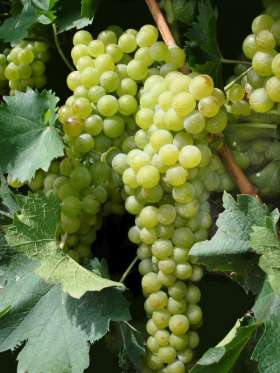
Good Cultivation Practices
Can also help avoid mildew. Removal of excessive foliage helps because it allows for greater air circulation. Just snip of some of the larger mature leaves where the vine is particularly heavily foliated, using sharp secateurs of scissors.
When watering, avoid spraying it overhead on the foliage – apply direct to the roots. Soaking wet foliage is asking for mildew, especially in the evening and overnight. When growing in the greenhouse or conservatory, make sure the structure is well ventilated at all times during the summer months.
Feeding the vines is of course important, you need healthy growth to support the vine and encourage fruit development; the stronger and healthier in growth the vine is then the less likely it is to succumb to diseases of any kind and mildew is often more prevalent [although not always so] on vines that are below-par. But on the other hand don’t overdo the feeding, especially with nitrogen-rich foods. Masses of soft new growth is much more prone to mildew.
Thinning the developing fruit clusters is important anyway because it results in much better fruit-quality. But it also has the advantage of discouraging mildew because congested fruiting clusters are much more prone to attack. You can remove up to 25-40% of the developing fruits when about the size of a pea. You might need to be strong willed to perform such an act but the results are worth it in the end!
Various chemical controls are available, ask your local stockist for a good broad spectrum fungicide. Prevention is better than cure so if you have been troubled by mildew in the past you might want to think about starting a spray programme early, from late April-May just as the first flush leaves are beginning to mature.



